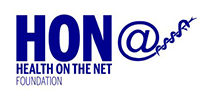What Symptoms Indicate That I Have Vein Disease in My Legs?
There are many leg symptoms that you may experience if you have venous disease. These symptoms will vary based on the type of vein disease and the severity of the disease. Some of the most common symptoms are listed below:
- Leg pain or discomfort, especially when standing or sitting for prolonged periods of time
- Leg swelling or ankle swelling
- Leg fatigue
- Leg heaviness
- Leg cramping, throbbing, or aching
- Itching of the leg skin
- Restless legs
- Skin discoloration, especially around the ankles, feet, or lower legs
- Red or brown discoloration of the skin of the ankles or feet
- Skin rashes, especially of the lower legs and ankles
- Skin ulcers, open wounds, or sores, which most commonly happen in the ankles and feet
- Bulging or enlarged veins developing that were not present before
- Ugly dark veins appearing in the skin of the legs, which can be varicose veins or spider veins
- Painful veins bulging beneath the skin
- Painful leg lumps developing beneath the skin
- Difficulty with walking where you need to need to take frequent breaks to rest and elevate your legs
- Unusual or unexpected bleeding from the skin of the legs or feet
- Easy bruising of the skin of the legs
How is Venous Disease Classified by Healthcare Professionals?
Healthcare professions, such as doctors and nurses, first try to determine whether the venous disease is an acute or emergent process that needs immediate attention. Examples of urgent vein conditions include blood clots, phlebitis, or bleeding. The more sudden the onset of symptoms then the more concern of the need for immediate attention and treatment. Emergent ultrasounds are often needed to assess for blood clots when they are expected. When symptoms are more long-standing or chronic in nature, then workup and treatments can be done on a more elective basis. Chronic venous disease is often the result of venous valve reflux. This is the same condition that leads to varicose vein disease. The classification of severity of venous reflux disease is referred to as the CEAP classification system. There are 7 levels of venous disease in this classsification, as described below.
CEAP Classification System For Chronic Venous Disease of the Legs
C0: No visible or palpable signs of venous disease (asymptomatic)
C1: Telangiectasias, Spider Veins, or Reticular Veins
C2: Varicose Veins
C3: Leg swelling or Edema
C4: Skin pigmentation, rashes, eczema, dermatitis
C5: Scarring from prior healed skin ulcers or wounds
C6: Active ulcer or wound of the skin

How Do I Get Rid of My Vein Symptoms?
Austin Vein Specialists specializes in the treatment of all forms of leg vein disease, including varicose veins, blood clots, venous ulcers, phlebitis, and spider veins. What options you have for treatment will depend on your specific condition. Most conditions will first be evaluated with a venous duplex ultrasound, CT scan, or MRI of the veins before therapy recommendations will be made. Contact us for a consultation with our board certified vein specialists to begin your evaluation.


